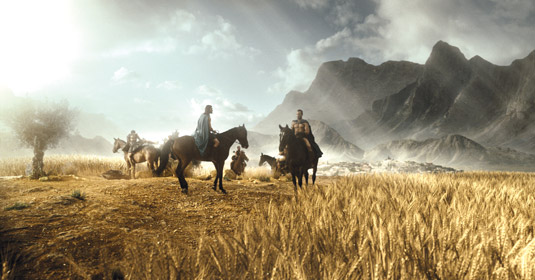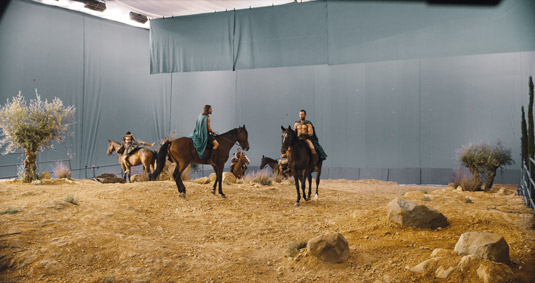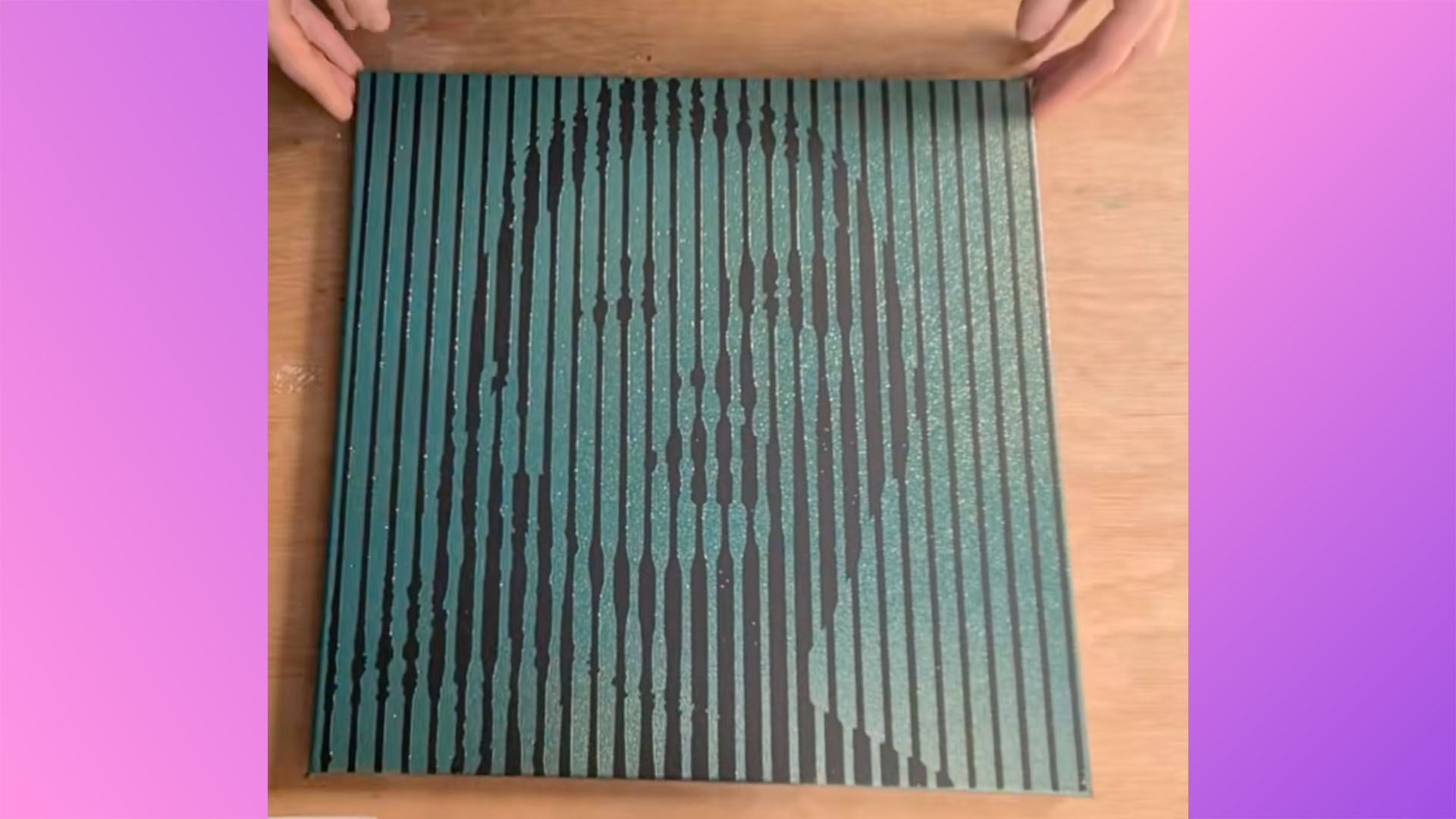How to bring a graphic novel to life in 3D
Cinesite’s Richard Clarke reveals how fur generator Yeti helped bring 300: Rise of an Empire’s hyper realistic world to life.

The sequel to Zach Snyder's interpretation of the graphic novel, 300, endeavours to capture the same hyper-real aesthetic of the original. But when Cinesite was hired alongside MPC, they found the job came with a twist: "When Rhythm & Hues went bust, Warner Bros. had about 250-300 shots they needed to send somewhere, and still try and
hit the same deadline," explains VFX supervisor Richard Clarke.
The team found themselves facing the arduous task of delivering 270 shots in 12 weeks. "We have the industry motto, 'it always gets done'," he adds, "and we just kept saying it to ourselves."
While MPC handled the battles, Cinesite's work involved the usual epic scene-setting, with shots of ancient Athens, Sparta and Greek army encampments. "The bulk of our work was bluescreen and greenscreen, environments, extensions, a lot of dialogue shots," says Clarke.
We have the industry motto, 'it always gets done' and we just kept saying it to ourselves
"We only had a handful of big shots that we had to get up and running as soon as possible. A few of the shots we designed from scratch – we literally got given a scribble from Zach Snyder, who said 'make this into a giant shot in three months, please'."
Fur solution
One sequence in Sparta features a full 3D environment, complete with a photoreal CG wheat field. Originally planned as a digital matte painting, the finished environment utilised fur system, Yeti – Peregrine Labs' Maya plug-in – to create a huge, undulating field of wheat.
"I wanted to do it as a fur solution because I wanted to use dynamic forces for the rolling wind," comments Clarke. "The other reason for going with Yeti is that we were able to talk to the guys who write it and say, can you give us a special beta version where we can do instancing of geometry so we can do the corn heads. This allowed
us to simulate it as fur, and then at rendertime actually render the corn [geometry] on top of it.

"We could easily render 30,000 heads of corn but only have the overhead of a rendertime fur system. We could do the dynamics on the guide curves and then just up the number in the render. It worked out really well."
300's signature particle effects – dust motes, snow, sparks and so on – also make a return. Known to the crew as Ridleys (a nod to Ridley Scott, who employed them as a physical effect in his 1985 film Legend), this visual motif was added to many shots, as drifting pollen caught in the sunlight or in army campfires as drifting, glowing embers in post-production.
This article originally appeared in 3D World issue 182.

Thank you for reading 5 articles this month* Join now for unlimited access
Enjoy your first month for just £1 / $1 / €1
*Read 5 free articles per month without a subscription

Join now for unlimited access
Try first month for just £1 / $1 / €1
Get the Creative Bloq Newsletter
Daily design news, reviews, how-tos and more, as picked by the editors.

The Creative Bloq team is made up of a group of art and design enthusiasts, and has changed and evolved since Creative Bloq began back in 2012. The current website team consists of eight full-time members of staff: Editor Georgia Coggan, Deputy Editor Rosie Hilder, Ecommerce Editor Beren Neale, Senior News Editor Daniel Piper, Editor, Digital Art and 3D Ian Dean, Tech Reviews Editor Erlingur Einarsson, Ecommerce Writer Beth Nicholls and Staff Writer Natalie Fear, as well as a roster of freelancers from around the world. The ImagineFX magazine team also pitch in, ensuring that content from leading digital art publication ImagineFX is represented on Creative Bloq.
